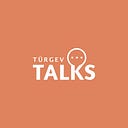Brave New World — A brief analysis Excerpts from a talk delivered by Zulfiqar Awan
Excerpts from a talk given by Zulfiqar Awan
We will focus on three themes:
• Education & Liberty
• Pleasure-seeking as a sustainer of totalitarianism
• Pills (Soma) for happiness
Introduction
Brave New World was published in 1932. the world was experiencing a depression like it has never seen before due to the 1929 stock market crash and severe droughts. People during this time period longed for a place like Huxley’s “New World” where they were free of worry and depression. Technology was evolving quicker than ever and manual labor was being replaced or cut out altogether due to new methods such as Henry Ford’s assembly line. The youth of this time period were rejecting their parent’s Victorian views in favour of a more “free love” approach in which “Everyone belongs to everyone else.”
Psychologists such as Pavlov and Freud were finalising research on the human brain which lead to new ideas and a new understanding of thought processes.
Huxley imagined a society that would use genetics and cloning in accordance with specific conditioning to create an “ideal” society in which everyone serves his or her purpose. This obsession with creating a “perfect’ society was later shown by Adolf Hitler, Benito Mussolini, and Joseph Stalin as they sought to “fix” the world.
Education and Liberty
In Chapter Two, the students continue their tour of the Central London Hatchery and Conditioning Centre. They watch “Neo-Pavlovian Conditioning,” a technique that trains infants. Here, the use of electric shocks and sirens in response to touching roses or books modifies the behaviour of Deltas. This discourages behaviour that might destabilise society, such as allowing Deltas to read books and acquire knowledge.
The students also view a group of sleeping infants who receive moral instruction through hypnopaedic learning as they sleep.
Nearly all main characters in Brave New World are from this society. When they are born, they are educated and conditioned through sleep teaching and electro shock therapy. Through this, the World State is able to ‘form’ the people, so that things like free-thought and the fear of death don’t exist.Instead of learning literature, history, art, logic, and philosophy — those are reserved for the rulers of this dystopia — pupils are indoctrinated with class-consciousness and banal slogans:
“Everyone belongs to everybody.”
“Even Epsilons are useful.”
And of course they receive their daily dose of soma.
Understanding the crises of the youth of today
In ‘Lost in Transition’, Christian Smith and his collaborators draw on 230 in-depth interviews with a broad cross-section of emerging adults (ages 18–23) to investigate the difficulties young people face today, the underlying causes of those difficulties, and the consequences both for individuals and for American society as a whole. They concluded the following:
• Lack awareness and commitment.
• Goal of the majority of emerging adults is to achieve material affluence; they are not critically aware of the problems of consumerism and materialism.
• Alcohol consumption and binge drinking are continuously increasing.
• Sexual liberation is greater than in previous generations, and many emerging adults are not aware of a world of hurt, regret and other negative emotions beneath the veneer of happiness.
• Moreover, most emerging adults are apathetic, uninformed and disengaged from political and public life.
• In all aspects of life, the majority of emerging adults are experiencing a lack of reflection, criticism and firm direction.
In his book ‘Learning to Flourish’ DeNicola offers fresh insights into why a liberal arts education if important for the youth of today.
The ‘Good Life’ as the goal of life. A Liberal Arts education provides 5 paradigms to achieve it:
• 1-Grounds the notion of a good life and individual flourishing in the process of enculturation. Studying the famous high works of our tradition.
• 2-Self -actualisation as the aim of liberal education, and as such, is the individual process of development the main objective to pursue.
• 3-The ability to understand the world.
• 4-Engage with the World
• 5-Liberal arts as skills of learning that help one to flourish as a lifelong process of cultivation through learning.
“If education is beaten by training, civilization dies,” he writes, for “the lesson of history” is that “civilization is a rarity, attained with difficulty and easily lost.” It is the liberal arts, not vocational training, that preserves civilization by producing reasonable men and responsible citizens.” (C.S. Lewis)
A liberal arts education consists of:
(1) Trivium — or, the traditional “language arts” of grammar, logic, rhetoric
(2) Quadrivium — or, the traditional “mathematical arts” of arithmetic, music, geometry, astronomy
(3) Science — or, here, the study of nature
(4) Moral Philosophy — or, ethics
Pleasure and Totalitarianism
• The satisfaction of pleasures sustains the ‘one world government’
• There is no ‘I”.
• ‘Civilisational value system coupled with the satisfaction of the human appetites shaped the characters in the book. Two impositions — inward and outward.
• Civilisation and human instincts.
Zulfiqar Awan
